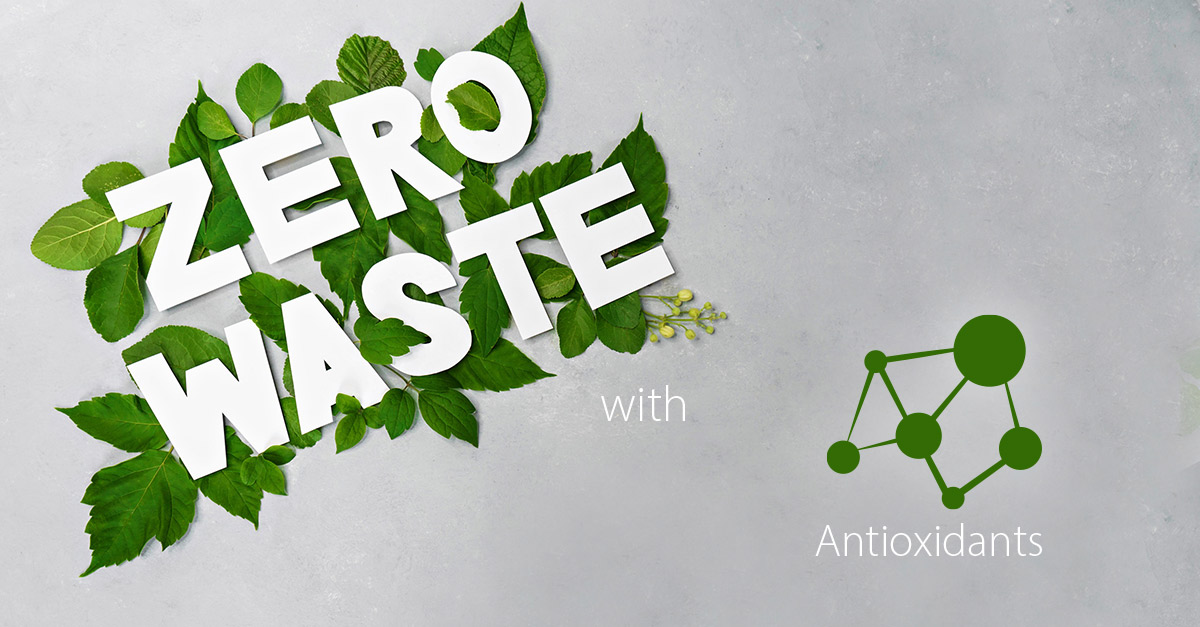To improve the efficient use of resources
Decreasing food waste
Decreasing food waste is critical to protecting the environment. Conserving food materials and finding other ways to use the meat co-products that many consumers do not eat is a vital part of combatting the food waste problem.
Up to half of every animal produced for food is not suitable for human consumption so it is a by-product. Without proper management, meat and animal by-products can become hazardous, which can be prevented by rendering. Rendering is the process of converting animal by-products, such as fats, bones, and proteins, into useful materials like fats and proteins for various applications, including animal feed, biodiesel production and industrial uses. Rendering offers several key advantages that change how we handle food waste disposal:
- Environmental responsibility
- Sustainability
- Cost-efficiency
In the rendering industry, antioxidants play a crucial role in maintaining the quality and stability of rendered products. Antioxidants such as tocopherols (vitamin E), BHA (butylated hydroxyanisole), BHT (butylated hydroxytoluene), propyl gallate and natural extracts are commonly used to prevent the oxidation of these rendered products, which helps to maintain their quality, nutritional value and shelf life. The most relevant applications of antioxidants in the rendering industry are:
- Fat Stabilisation: Antioxidants are added to rendered fats and oils to prevent or slow down oxidation, which can lead to rancidity. Oxidation causes the fats to become rancid, resulting in off-flavours, reduced nutritional value, and shorter shelf life.
- Protein Preservation: Rendering also produces protein meals that are used as ingredients in animal feed. Antioxidants can be added to these protein meals to protect against oxidation and maintain their nutritional value. Oxidation of proteins can lead to reduced digestibility and the formation of potentially harmful compounds.
- Feed Stability: Rendered products are often incorporated into animal feed formulations. Antioxidants can be added to the feed to prevent the oxidation of the rendered ingredients and other sensitive feed components. By minimising oxidation, antioxidants help maintain the nutritional integrity of the feed, ensuring that animals receive adequate and stable nutrient levels.
- Storage and Transportation: Rendering facilities produce large quantities of rendered products that need to be stored and transported to their end-use destinations. During storage and transportation, these products are exposed to oxygen, heat and other factors that can accelerate oxidation. Antioxidants are added to rendered products to protect them from oxidation during these processes, extending their shelf life and maintaining their quality.
By incorporating antioxidants into rendering processes and rendered products, the industry can enhance the stability, nutritional value, and overall quality of the materials produced.
When it comes to choosing antioxidants for rendered products, it is important to consider factors such as the specific product composition, intended application, processing conditions, regulatory guidelines and desired shelf life. Different antioxidants may exhibit varying degrees of effectiveness depending on the specific conditions and requirements of the rendered products.
Antioxidant blends can often be more effective than using a single antioxidant in isolation. Combining different antioxidants in a blend can create synergistic effects, enhancing their overall antioxidant activity and providing better protection against oxidation. The synergistic effect between BHT and BHA arises from their complementary mechanisms of action and the ability to regenerate each other, which enhances their antioxidant activity and effectiveness. In the same way, BHA and propyl gallate are commonly used together.
Moreover, the use of carefully selected carriers in antioxidant blends can enhance their distribution, solubility, stability and bioavailability of antioxidants, leading to improved effectiveness and better protection against oxidation in various applications.
It is important to note that the selection and combination of antioxidants should be carefully considered based on the specific application, compatibility of ingredients, and regulatory guidelines.
In conclusion, the rendering industry plays a vital role in resource utilisation and waste management. Processing animal by-products, that would otherwise be discarded or pose environmental challenges and protecting them using antioxidants, turn them into valuable products. This not only reduces waste but also provides a sustainable source of raw materials for various industries, contributing to a more efficient and circular economy. Conducting stability testing and consulting with experts in the field can help determine the most suitable antioxidant and dosage for your specific application.
Do not hesitate contact your nearest MIAVIT staff to find out more about antioxidants.
